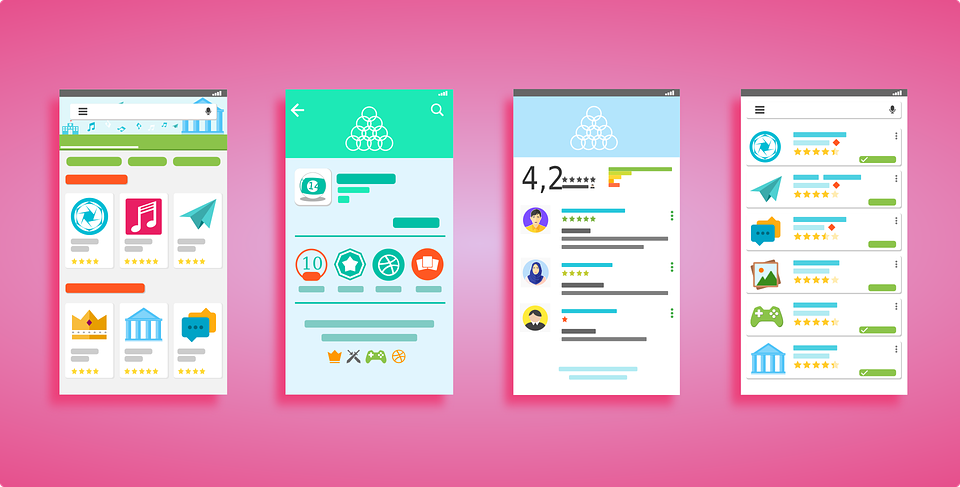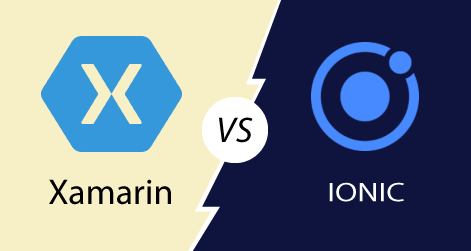Cross platform app development has been a viable alternative to the traditional native app development in recent times. Both cross platform and Native mobile app development have their own features that attract a developer.
Whereas in native platform Java is used for Android app development and Swift or Objective-C is used for iOS app development, Xamarin and Ionic are two of the premier frameworks for Cross platform app development.
Just as there are some powerful iOS app development tools, Xamarin and Ionic both provide frameworks from which some awesome cross platform apps can be developed.
Now begs the question, which is the best one or the right one for you?
Xamarin has been a favorite for a cross platform mobile framework for a long time. Ionic, with its flexibility, has become one of the best tools to utilize web development technology to the fullest.
In the following Xamarin VS Ionic, we look at them both and compare on various aspects to get more insight.
Xamarin VS Ionic: Different Approaches

Before looking into Xamarin VS Ionic, let’s take an initial look as to how both of these frameworks go about to achieve their goal.
Xamarin
Often referred to as ‘Native’ cross platform framework, Xamarin is a Microsoft supported framework. It uses C# along with native libraries that are wrapped in the .NET layer. Using the single intermediate language C#, developers can write codebase which can then be ported to native devices.
Ionic
On the other hand, Ionic utilizes web technologies such as JavaScript, HTML5, and CSS to build apps. The Ionic core is based on AngularJS and is written with Sass. Typescript is used as the main programming language.
Both of them use all their resources to create apps for different operating systems using a single technology stack. This reduces the workload, cost and time of the developers.
Xamarin VS Ionic: Performance and Code

Xamarin
This platform gives developers two options for developing mobile apps,
- Android & Xamarin.iOS: This is the approach for creating apps that are more akin to native apps. Instead of focusing on the codebase, it focuses mainly on sharing business logic. Native UI controls and leverages platform-specific hardware acceleration to attain near-native performance. This performance is not possible if solutions that interpret code at runtime.
- Forms: Instead of focusing on platform-specific behavior, Xamarin.Forms focus on broad code sharing. This allows developers recycle up to 96% of source codes. However, this thus reduces the performance of the app significantly in comparison.
Furthermore, Ahead-of-time (AOT) compilation is used for iOS codes and Just-in-time (JIT) for compiling Android codes. However, AOT can be used for both Android and iOS.
Ionic
Unlike Xamarin, Ionic uses web technologies to recreate native behavior as well as render application. Since Ionic doesn’t use any native components, the approach is relatively slow. Native wrapper Cordova is used to connecting to the native API and adapt with the underlying platform.
However, Ionic is undoubtedly superior when it comes to the testing process. Thanks to a host of pre-made and pre-styled components, the testing process can be done rapidly. The development cycle becomes faster and projects can be completed more rapidly.
Ionic exclusively uses JIT to run codes, both for Android and iOS. Since running JIT on iOS is impossible, it uses a platform browser called WKWebView for iOS.
Xamarin VS Ionic: GUI

Xamarin
Both Xamarin.Android & Xamarin.iOS comes into play for creating the user interface.
- Android & Xamarin.iOS: In this approach, developers work with native platform specific UI. They use native user interface controls and layout to create the final UI. The end product looks and feels like a native mobile app.
- Forms: Xamarin.Forms map each page and its controls automatically in line with platform specific interface elements at runtime. This quickens the development process but loses the native look and feel.
Ionic
Ionic renders everything using HTML5 and CSS instead of using native components. From there, Cordova is used for creating a native mobile behavior and AngularJS to make the app feel more native.
Recent updates have brought native-style user interface elements and layouts that were only available in Native SDKs on iOS and Android before.
Xamarin VS Ionic: Price

Xamarin
Since the early part of 2016, Xamarin has been free to use. It has been an open source product under the MIT license. IT is integrated as a part of Visual Studio IDE.
The free version or the non-enterprise version allows up to 5 users. On the basis of subscription, there are professional and enterprise licenses that unlock additional features.
The professional user license costs $539 a year and the enterprise license $2,999 a year. Or if you prefer to get it on a monthly basis, then the professional license is $45 a month and the enterprise license is $250 a month.
Ionic
Similar to Xamarin, Ionic has a free and a paid version of their product. The ‘basic’ version is an open source framework. There’s no need to pay for anything even during the development process.
And then there’s a paid version called Ionic Pro. The paid version is further divided into three packages on the basis of users’ needs and features; developer, team, and business. Each offers additional features such as increased duration of history tracking and collaboration tools.
The subscription costs range from $29 to $199 per month.
Xamarin VS Ionic: Suitable Project Type

Xamarin
This is the perfect framework for creating complex apps that can be easily integrated with existing enterprise applications and architecture. This is because Xamarin uses C# for sharing code a business logic between the server and the client.
Also, since Ionic has limited support for native API, Xamarin is best for creating apps that fully utilize native device features.
Ionic
On the other hand, Ionic is just the right framework for projects that are relatively simple, doesn’t require much customization and looks & feels somewhat like a native.
If there is a skilled development team behind you who knows how to get the max out of the web technologies then Ionic can do wonders for you.
Furthermore, Ionic is more flexible in comparison to Xamarin. Unlike Xamarin, MVVM, MVC and MVP is supported by Ionic.
Wrapping Up
Each project is different with different goals and different process. Xamarin is a good choice if you want to lean more towards higher performance, stability, and support. Additionally, if you are more focused on rapid development and code sharing instead of UI, than Xamarin.Forms can be useful.
On the other hand, if you are working on a more restricted budget and yet still require a great app, than Ionic is the right tool for you. Ionic Pro is more than capable of creating full-scale public apps with advanced app structure.
At the end of the day, your choice will depend on what’s your requirements, goals and available resources. Both Xamarin and Ionic are capable cross platform mobile frameworks.
The more you know, the more it’ll help you choose the right one. As for now, we must end the Xamarin VS Ionic comparison here. Now you decide which the right cross platform mobile framework is for you.





